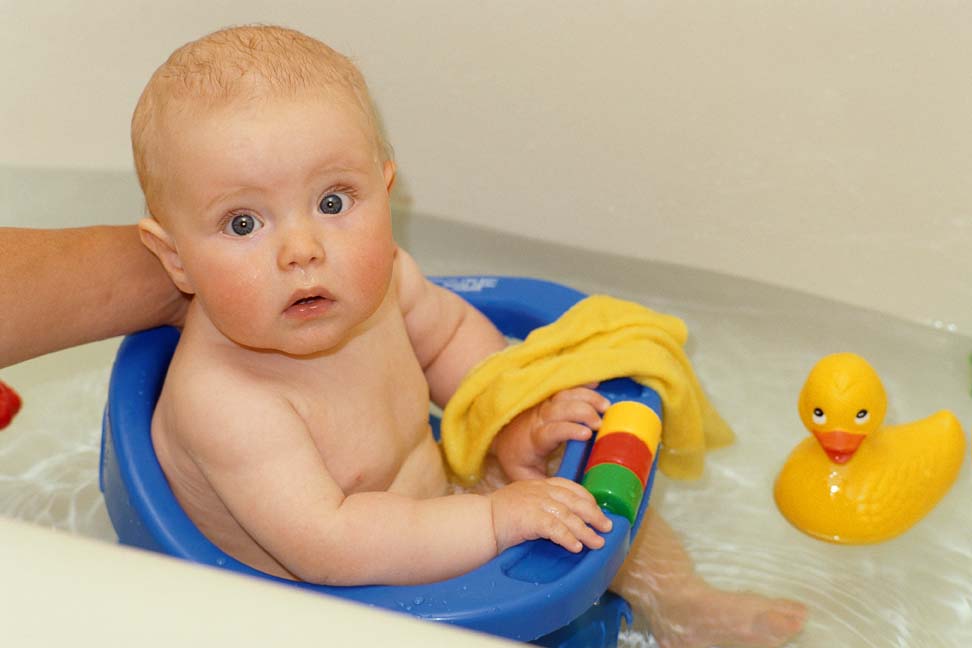 Ticks are a common complaint in children, who often play outside. They are small brown bugs (arthropods) that feed off the blood of animals, including humans. Ticks have three phases in their life cycles, and all three stages need blood and can bite humans. They live in grasses and shrubs but especially in wooded areas. The most common ticks in our area (Georgia) are the lone star tick and the dog tick, both of which are about ¼ to ½ inch in size, and the black-legged (deer) tick, which is the size of a pinhead. All ticks can transmit disease; the deer tick can transmit Lyme disease, which is uncommon in Georgia. Ticks can also transmit Rocky Mountain spotted fever, ehrlichiosis, babesiosis, tularemia, Southern Tick-Associated Rash Illness (STARI), tick paralysis, and other diseases. Fortunately, tick bites rarely cause disease. They do often cause local irritation. The longer the tick is attached, the greater the risk of disease transmission.
Ticks are a common complaint in children, who often play outside. They are small brown bugs (arthropods) that feed off the blood of animals, including humans. Ticks have three phases in their life cycles, and all three stages need blood and can bite humans. They live in grasses and shrubs but especially in wooded areas. The most common ticks in our area (Georgia) are the lone star tick and the dog tick, both of which are about ¼ to ½ inch in size, and the black-legged (deer) tick, which is the size of a pinhead. All ticks can transmit disease; the deer tick can transmit Lyme disease, which is uncommon in Georgia. Ticks can also transmit Rocky Mountain spotted fever, ehrlichiosis, babesiosis, tularemia, Southern Tick-Associated Rash Illness (STARI), tick paralysis, and other diseases. Fortunately, tick bites rarely cause disease. They do often cause local irritation. The longer the tick is attached, the greater the risk of disease transmission.
What are the symptoms?
- The tick is seen attached to the skin. It is often in the groin area, armpits, neck, behind the ears or in the scalp.
- Sometimes it itches or is a little irritating to the child, even after it is removed.
- There is often a little bump there, which may still be there after the tick is removed. This is perfectly normal.
- The lymph nodes around the bite are often enlarged (pea to bean-sized). This is also normal.
How do I remove ticks?
- It is important to remove the whole tick, alive if possible.
- Use tweezers and grasp the tick as close to the head (at the skin) as possible. Apply steady traction until the tick lets go. Do not twist; this can leave the head in the skin. Do not crush the tick by squeezing too hard; this can release germs into the skin. If you do not have tweezers, use fingernails or a loop of thread or a needle between the jaws.
- Deer ticks and tiny nymphs can be removed by scraping with a credit card or the edge of a knife.
- If it is still moving, it is still alive. Check to see that the head is still attached. Dispose of the tick; do not squeeze it between your fingers because this can release germs.
- If the head is still in the skin, remove it with a sterile needle as you would a splinter.
- Wash the area and your hands with soap and water. You may want to apply antibiotic ointment once.
- Hot matches, fingernail polish, petroleum jelly, or alcohol do not work, can be dangerous, and should not be used.
What complications should I look for?
- The little bump that is left behind is normal and can last for months to years. If the head or part of the head is left in the skin, a bump can also form. Dermatologists can remove this by performing a simple punch biopsy.
- Often the surrounding lymph nodes will enlarge. These usually go away in a few weeks.
- Lyme disease is rare in Georgia, and the tick has to be attached for 18-24 hours to transmit the disease. The main symptom is a ring-shaped rash around the bite that gets bigger and bigger.
- Other tick-borne diseases, such as Rocky Mountain spotted fever, are more common. Symptoms include fever, a rash all over the body (often including the hands and feet), vomiting and feeling ill. Medical attention is required right away.
How can I prevent my child from getting tick bites?
- Check your child for ticks after playing outside, especially if playing in the woods or tall brush or shrubs. Check especially the groin, behind ears and knees, armpits, and in the hair.
- Wear light-colored clothing, which makes it easier to see ticks.
- Insect repellent with no more than 10% DEET is very effective. Spray especially on shoes, socks, and lower legs. DEET can be applied to the skin.
- Permethrin repellents are more effective against ticks, and it kills them as well. However, it cannot be applied to the skin. It is very effective when applied to socks and shoes. It lasts through several washings, and can be applied to tents and sleeping bags as well.
- Wearing long pants and tucking them into socks, and wearing long-sleeved shirts, can help if playing or walking in the woods.
- Shower after playing outside.
- If camping or spending a long time in the woods, perform periodic tick checks. It is helpful to have someone else (a “buddy”) check for ticks.
- Keep grass and brush mowed and low where the children play.
When should I seek further care?
- If you cannot remove the tick.
- If you think part of the tick is still in the skin.
- If fever, vomiting, or rash develop after a tick bite.
- If there are signs of infection around the bite: swelling, pus, drainage, pain, redness.

